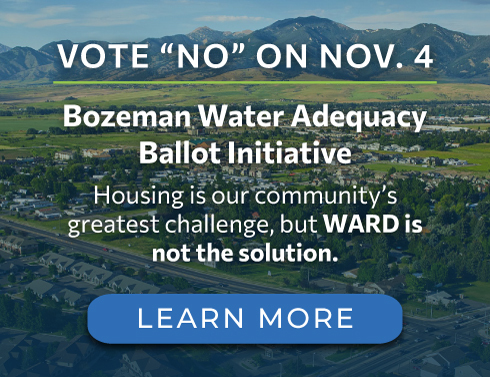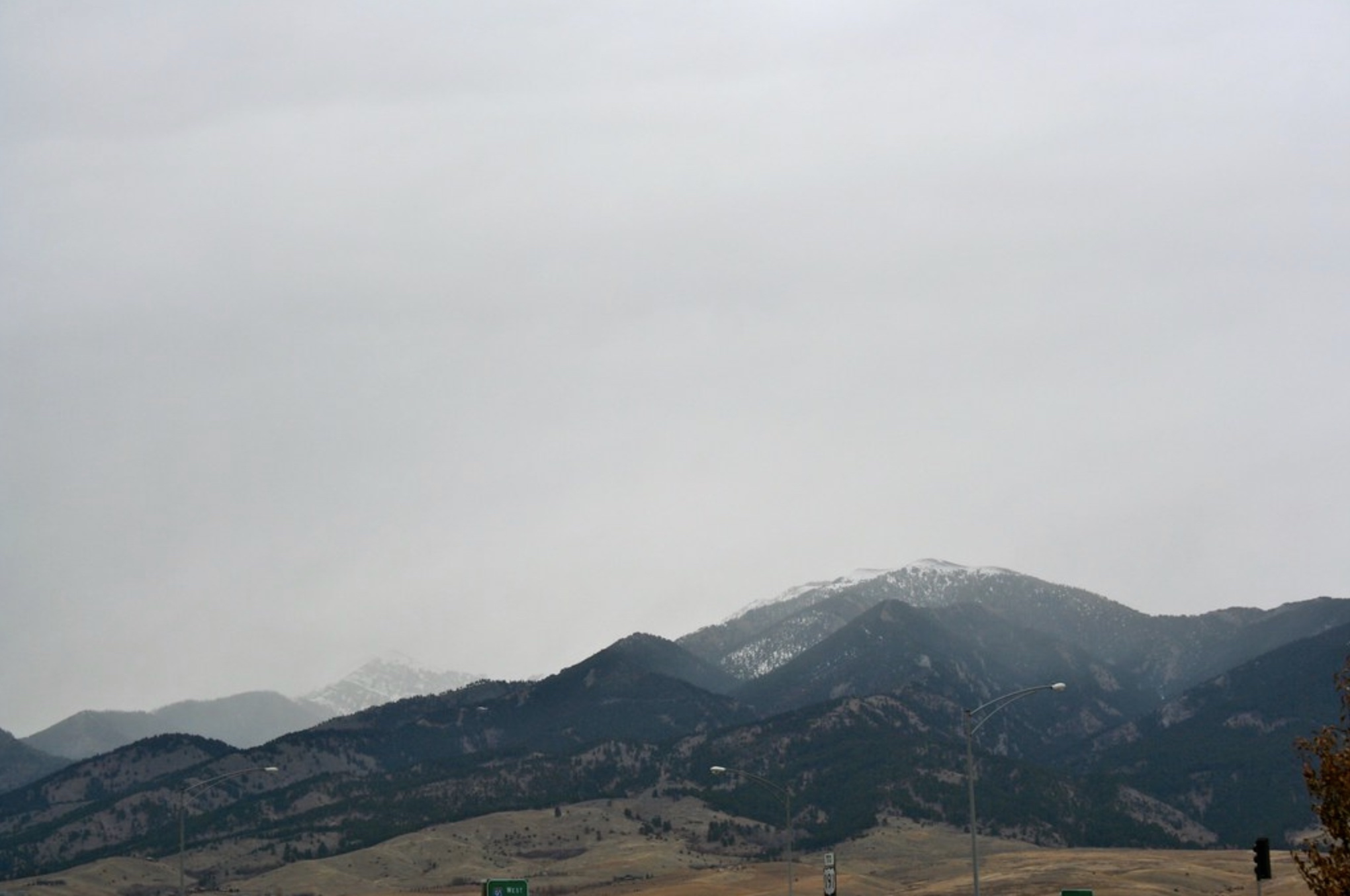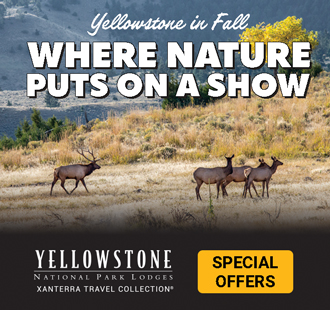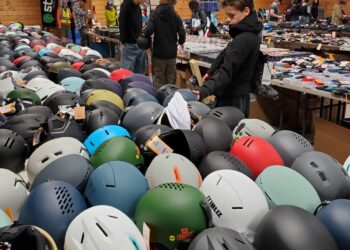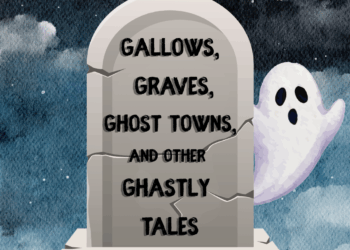By Jessianne Castle EBS ENVIRONMENTAL AND OUTDOORS EDITOR
BOZEMAN – After an all-night drive from his home on the Nez Perce Reservation in North Central Idaho following his son’s middle school graduation, Josiah Blackeagle Pinkham stood before a gathering of more than 200 people at Bozeman’s Emerson Center for the Arts and Culture on the morning of June 5 as a part of the nonprofit Future West’s conference, “Sustaining the New West Bold Visions – Inspiring Action.”
Standing at the podium as an ethnographer and storyteller, Blackeagle Pinkham spoke after a presentation about growth trends in the Greater Yellowstone. “This is an opportunity to affect the way that people think about the landscape,” he said.
Blackeagle Pinkham projected an image of a rock formation on his reservation, sacred to his people, and shared an important oral tradition. Speaking on behalf of his people, he also described a core-value statement that includes the commitment to promoting relationships with the land—an aspect of which includes ensuring the survival of resources as well as people and their lifeways.
“I want you to think about this term ‘wilderness’. It’s based upon the concept of wild, something untamed, something that doesn’t do what you want it to do,” he said. “I don’t have that concept. That’s my homeland; it’s sacred. I revere it in a way that I can’t compare anything else to. What am I without my homeland? … It’s really important to think about how people relate to their landscape.”
During the conference, Blackeagle Pinkham’s oral tradition was placed in conversation with other experts around the Northern Rockies, all of whom explored data, definitions, relational thinking and visions for the future of the West, from planning towns and working landscapes, to management for wild lands.
“I would guess that one of the reasons why you’re here is that you all share a concern—and maybe a deep concern—for the future of this incredible place that we are so fortunate to call our home,” said Future West Director Dennis Glick.
“I also believe that each and every one of you knows in your heart of hearts that we really do live in an extraordinary landscape,” he added. “The million-dollar question is, can we conserve these natural, cultural, social and economic values even as we grow and change.”
In the fall of 2017, Future West hosted a similar conference in Bozeman in order to explore conservation challenges in the Greater Yellowstone Ecosystem, and this year’s conference explored visions for the future and how to achieve them, relying on examples within the area.
To use the words of the first speaker, conservation biologist David Theobald, “Here we are today. Where do we want to go in the future and how do we get there?”
The morning lineup included Blackeagle Pinkham and Theobald, as well as Idaho’s Teton County Commissioner Cindy Riegel; Blackfoot Challenge founding member and rancher Denny Iverson; and Aerin Jacobs from the Yellowstone to Yukon Initiative.
The afternoon session heard from the Mayor of Canmore, Alberta, John Borrowman; Lain Leoniak, former Bozeman water conservation specialist and current assistant attorney general for Colorado; Loren Bird Rattler of the Blackfeet National Agricultural Resource Management Plan Team; Devin Middlebrook from the Lake Tahoe Regional Planning Agency; and Robert Liberty, architect of Oregon’s land-use planning system.
Among small-scale conservation success stories, a single thread becomes clear: in order to promote open spaces and viable communities and economies, conversations and decisions must be informed with data and actual experience.
Denny Iverson, who lives in the Blackfoot Valley east of Missoula, described a forward-looking initiative in his home area, that originated in the 1970s when grizzlies still hadn’t shown up on the landscape, there was plentiful water and development was still slow.
“If you live out on the landscape like I do, you know that something’s changing,” Iverson said. “Whether it’s growth, climate change, water, predators.”
Known as the Blackfoot Challenge, the initiative began when a group of ranchers and local landowners decided to work together as stewards. They started a cattle carcass pickup program for ranches as one way to reduce conflict with grizzly bears that are attracted to dead cows. It’s grown to include programs like “range riders,” water conservation through organized water-use and agricultural irrigation, forestry initiatives, and efforts to stop invasive weeds.
“The main thing is we’re trying to keep our landowners, our ranchers, our farmers on the landscape because we know if we do that, then we’ll still have wildlife habitat,” Iverson said. “And we’ll still have that ranching tradition. We don’t forget the people [who are] part of that.”
Aerin Jacobs, as an ecologist, spoke about ecological integrity and biodiversity, beginning by saying, “I think it’s really important when we travel, when we work, where we live, to know who lives there, to know who’s lived there for a long time.” In addition to tribal homelands, she said this includes historic wildlife ranges.
Amid high extinction rates for many plant and animal species worldwide, Jacobs said her vision—Y2Y’s vision as well—“is an interconnected system of wild lands and waters that stretches from Yellowstone to Yukon, that harmonizes the needs of people with those of nature … These things are inextricably combined.”
As a specific example of how to accomplish this vision, Jacobs referred to the numerous wildlife-crossing structures that have been built across highways in the last three decades. She also provided tips for success in developing these tangible solutions.
“When you’re thinking about something this large scale, you have to collaborate,” Jacobs said, adding that we must connect with each other, develop partnerships, communicate broadly, measure different metrics for success, embrace mistakes, and start small but think big.

